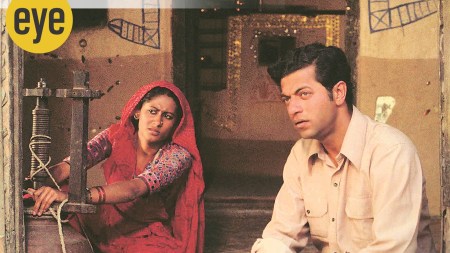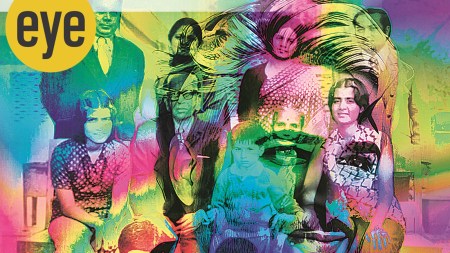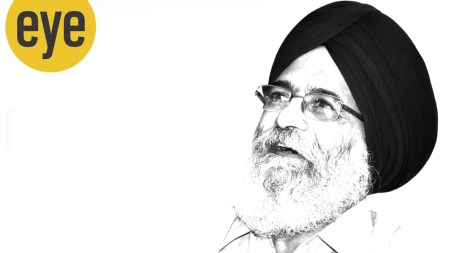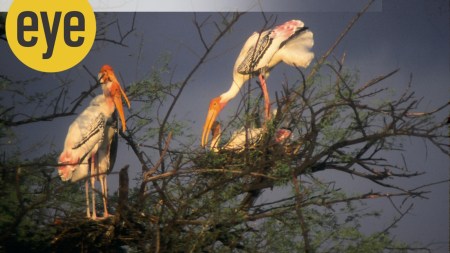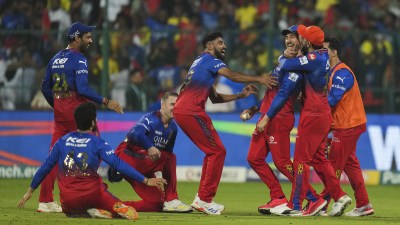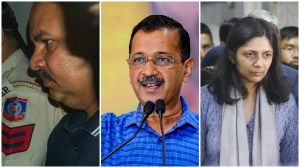- India
- International
UPSC Key | 1st May, 2024 — Covishield, World Economic Outlook, Look Out Circular and more
Exclusive for Subscribers from Monday to Friday: How are Covishield and IMF's World Economic Outlook relevant to the UPSC Exam? What significance do topics like El-Nino and new productive force have for the preliminary and main exams? You can learn more by reading the Indian Express UPSC Key for May 1st, 2024.
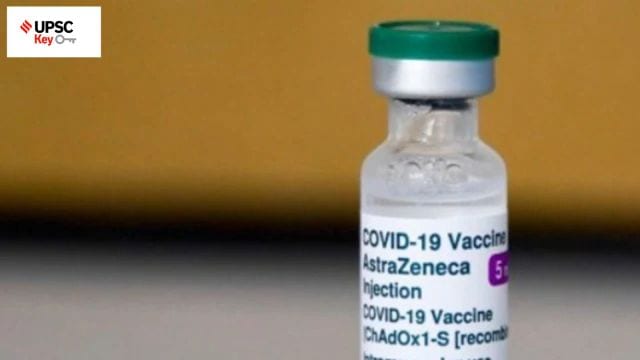 Fifty-one cases have been lodged in the High Court, with victims and grieving relatives seeking damages estimated to be worth up to £100 million. Know more in our UPSC Key. (AP Photo/File)
Fifty-one cases have been lodged in the High Court, with victims and grieving relatives seeking damages estimated to be worth up to £100 million. Know more in our UPSC Key. (AP Photo/File)Important topics and their relevance in UPSC CSE exam for May 1, 2024. If you missed the April 30, 2024 UPSC CSE exam key from the Indian Express, read it here.
🚨 The Indian Express UPSC Essentials brings to you the April edition of its monthly magazine. Click Here to read. Share your views and suggestions in the comment box or at manas.srivastava@indianexpress.com🚨
Explained
Covid Vaccine link to blood clots: The lawsuit in UK on Covishield
Syllabus:
Preliminary Examination: Current events of national and international importance,
Mains Examination: GS-II: Issues relating to development and management of Social Sector/Services relating to Health, Education, Human Resources.
What’s the ongoing story- Global pharmaceutical giant AstraZeneca has said that its AZD1222 vaccine against Covid-19, which was made under licence in India as Covishield, could cause low platelet counts and formation of blood clots in “very rare” cases.
Prerequisites:
— What is the Covishield vaccine?

— What is Thrombosis with Thrombocytopenia Syndrome (TTS)? What are its symptoms?
— Are there any risk factors for TTS?
Key takeaways:
— AstraZeneca has accepted a link between the vaccine and TTS, a medical condition characterised by abnormally low levels of platelets and the formation of blood clots.
— AstraZeneca spoke about TTS in court documents following a suit brought against the company in the United Kingdom. The pharmaceutical giant is being sued over health claims related to the vaccine that it developed in collaboration with the University of Oxford amid the Covid-19 pandemic in 2020.
— A range of symptoms are associated with TTS, including breathlessness, pain in the chest or limbs, pinhead-size red spots or bruising of the skin in an area beyond the injection site, headaches, numbness in body parts, etc. TTS could mean a restriction in the flow of blood due to clotting.
— The concerns related to the vaccine have been reported earlier. But this is the first time that AstraZeneca has confirmed the link between TTS and its vaccines.
— In March, 2021, many Europen countries temporarily paused the use of the AstraZeneca vaccine after a few cases of blood clotting were reported. The Indian government said in May 2021 that 26 potential thromboembolic events, or formation of clots in blood vessels, had been reported since Covishield began to be administered.
— In the case of Covaxin, which was India’s indigenous vaccine manufactured by Bharat Biotech, it said “no potential thromboembolic events” had been reported.
For Your Information:
— In 2023, the WHO incorporated vaccine-induced immune thrombotic thrombocytopenia (VITT) into its classification of TTS.
Points to Ponder:
— What are the different types of COVID-19 vaccines?
— What are the types of Vaccine?
(Thought Process: Read and compare-Inactivated vaccines, Live-attenuated Vaccines, Messenger (m) RNA Vaccines,Toxoid Vaccines, Subunit, Recombinant, Polysaccharide, and Conjugate Vaccines; Viral Vector Vaccines)
— How do vaccines work?
— What are the economic and ethical considerations involved in the development of vaccines?
Post Read Question:
Prelims
In the context of vaccines manufactured to prevent the COVID-19 pandemic, consider the following statements: (2022)
1. The Serum Institute of India produced a COVID-19 vaccine named Covishield using an mRNA platform.
2. The Sputnik V vaccine is manufactured using a vector-based platform.
3. COVAXIN is an inactivated pathogen-based vaccine.
Which of the statements given above are correct?
(a) 1 and 2 only
(b) 2 and 3 only
(c) 1 and 3 only
(d) 1, 2 and 3
Mains
What are mRNA vaccines? How the development of mRNA vaccines was crucial to the development of Covid vaccines?
Other Important Articles Covering the same topic:
Explained: How India’s first mRNA vaccine for Covid-19 was created
Why High Court said banks can’t stop debtors from going abroad
Syllabus:
Preliminary Examination: Current events of national importance, Indian Polity and Governance- Constitution, Rights Issues.
Mains Examination: GS-II, GS-III: Government policies and interventions for development in various sectors and issues arising out of their design and implementation, Indian Economy and issues relating to planning, mobilisation of resources, growth, development and employment.
What’s the ongoing story- The Bombay High Court has held that public sector banks (PSBs) cannot recommend or request the issuance of Look Out Circulars (LOCs) against loan defaulters and has set aside the provisions of the central government’s Office Memoranda (OM) that empowered PSBs to do so.
Prerequisites:
— What does the term “Look-Out Circular” mean, and when it can be issued?
— What are Articles 14 and 21 of the Indian Constitution?
— What is the difference between the public sector and private banks?
Key takeaways:
— On April 23, a division Bench of Justice Gautam S Patel (who has since retired) and Justice Madhav J Jamdar quashed LOCs issued to restrain PSB debtors from travelling abroad, saying they are “strong-arm tactics” used to get around legal processes, and violative of fundamental rights guaranteed under Articles 14 and 21 of the Constitution.
— In September 2018, a ground was introduced to issue an LOC to restrain a person from going abroad if their departure was detrimental to the “economic interest” of the country. The following month, a new clause was introduced empowering the chairperson of the State Bank of India (SBI) and the managing director and chief executive officers of all other PSBs to request immigration authorities to issue LOCs against default borrowers.
— The default borrowers included not only the borrowers but also the guarantors for repayment of loans, and the principal officers or directors of corporate entities in debt.
— The court held that the fundamental right to travel abroad cannot be curtailed by executive action without any government statute or controlling statutory provision.
— The “inclusion of only PSBs is ultra vires Article 14 as being an impermissible and invalid classification, and being manifestly arbitrary”, the court held.
— The court said banks were “always at liberty” to apply to any court or tribunal for an order against an individual borrower, guarantor, or indebted person, restraining them from travelling overseas. Banks can also invoke their powers under the Fugitive Economic Offenders Act, 2018, where applicable.
Points to Ponder:
— What is the difference between an LOC and Interpol notices like the Red Corner Notice?
— What is the Debt Recovery Tribunal? What are its powers?
— What is the Fugitive Economic Offenders Act, 2018?
— What is the role of RBI in the Indian Banking Sector?
Post Read Question:
What steps has the Indian government taken against fugitive economic offenders? Explain who qualifies as a fugitive economic offender?
Other Important Articles Covering the same topic:
Explained: What is a look out notice, and when is it issued?
El Nino, anti-cyclone systems: Why large parts of India experienced heatwaves in April
Syllabus:
Preliminary Examination: General issues on Environmental Ecology, Biodiversity and Climate Change – that do not require subject specialisation.
Mains Examination: GS-III: Conservation, environmental pollution and degradation, environmental impact assessment.
What’s the ongoing story- So far, April has been abnormally hot. In the first 26 days of the month, either a small pocket or a considerably large geographical area in India experienced heatwave conditions, according to the India Meteorological Department (IMD).
Prerequisites:
— What is a heatwave?
— What is El Nino?
— What is the core heat wave zone?
Key takeaways:
— The Core Heatwave Zone (CHZ) spanning central, north, and peninsular India between Gujarat and West Bengal is prone to heatwave conditions every year.
— IMD declares a heatwave when the normal maximum temperature recorded over at least two localities in plains touches 40 degree Celsius or exceeds 4.5 degree Celsius from normal.
— A heatwave is declared in hilly and coastal regions when temperatures cross 30 degree Celsius and 37 degree Celsius respectively.
— A severe heatwave is declared if the temperature departure exceeds 6 degree Celsius from normal.
— Reason for heatwave in April: One, 2024 is a year that began in an El Niño state. According to Mrutyunjay Mohapatra, director general of the IMD, the years that begin in an El Niño state, experience extreme temperatures, harsh, multiple and extended heatwave spells, and lack of pre-monsoon rainfall.
— Two, the persistent presence of anticyclone systems over southern peninsular and southeastern coastal areas is also partly responsible for such a hot April.
— The presence of anticyclone systems also leads to wind flow from land towards the sea and prevents the incoming cooler sea breeze, which is otherwise responsible for cooling land from time to time.
— The inclusion of Kerala and Sikkim to the list of heatwave-affected areas indicates that the temperatures are rapidly rising during summers over regions outside that of the CHZ.
For Your Information:
— The World Meteorological Organization’s ‘State of the Climate in Asia 2023’ report notes that Asia has warmed faster than the global average and the warming trend has nearly doubled since the 1961-1990 period.
— In 2023, UNICEF estimated that “76 per cent of children in South Asia are exposed to extreme high temperatures where 83 or more days in a year exceed 35°C.” That’s 460 million children under the age of 18. And that, “3 in 4 children in South Asia are already exposed to extreme high temperatures compared to only 1 in 3 children (32 per cent) globally.”
Points to Ponder:
— Is heatwave recognised as a natural disaster in India?
— What health initiatives need to be taken at national and international levels to combat the impact of heat waves?
— How do different climatic events impact weather patterns in the Indian subcontinent?
— Impact of heatwave on poor, women and children
Post Read Question:
Prelims
Consider the following statements regarding heat waves according to the India Meteorological Department (IMD).
1. A heat wave is declared for hilly regions when the maximum temperature of a station touches at least 40 degrees Celsius.
2. Heatwave is declared when the departure from normal temperature is by 4.5 to 6.4 degrees Celsius.
Which of the statements given above is/are incorrect?
(a) Both 1 and 2
(b) 1 only
(c) 2 only
(d) Neither 1 nor 2
Mains
What criteria have been used by IMD to declare heatwaves? What steps can be taken by the government to control the adverse effects of heatwave?
Other Important Articles Covering the same topic:
Asia worst hit by disasters in 2023, 79 extreme weather events killed over 2,000: WMO report
Editorial Page
The new productive force
Syllabus:
Preliminary Examination: Current events of national and international importance
Mains Examination: GS-II, GS-III: International Relations, Science and Technology- developments and their applications and effects in everyday life.
What’s the ongoing story- C Raja Mohan writes: “Consider the massive new campaign in China on mastering the “new productive forces”. The Chinese Communist Party’s new campaign is quite central to Beijing’s current ambition to overtake Washington in the production of advanced science and technology and rise to the top of the global power hierarchy.”
Prerequisites:
— What are the new productive forces?
— What are emerging technologies?
— What is the difference between labour-intensive economy and technology-intensive economy?
— International collaboration: QUAD, Chip-4 Alliance, and iCET
Key takeaways:
— “As Xi stokes up China’s nationalism and seeks to reduce reliance on foreign technologies, full control over the new productive forces has become a major strategic objective for Beijing.”
— “The new obsession with technology policy is not limited to China; the question of mastering the technological revolution animates all major economies.”
— “The Biden administration has passed three pieces of legislation — the Infrastructure Investment Act, the CHIPS Act, and the Inflation Reduction Act. Together, they form a muscular industrial policy aimed at renewing American leadership in advanced technologies.”
— “The US is also trying to develop new global technology coalitions with its friends and partners, including the Quadrilateral forum with Australia, India, and Japan, and the so-called Chip-4 alliance between the US and three leading semiconductor producers — Japan, South Korea, and Taiwan. It is also building deep bilateral partnerships in critical and emerging technologies with India (the iCET).”
— “Over the last decade, the Indian government has leveraged digital technologies for the delivery of services, emphasised investments in renewable energy, focused on a mission mode to put India back on the map of semiconductor production and develop a strategy for the acceleration of India’s AI capabilities.”
— Suggestions made by the author: “To keep pace with the new global race for mastery over the “new productive forces”, Delhi needs to undertake a sweeping overhaul of its technology departments, significantly raise the national expenditure on R&D, and encourage greater participation of the private sector in the research, development, and production of modern technologies.”
— “Modernising the technological foundation of the Indian economy and national security must necessarily be at the top of the agenda for the next government if Delhi wants to be a part of the global map of “new and high-quality forces of production”.
For Your Information:
— In the Interim Budget speech 2024, Finance Minister Nirmala Sitharaman announced a Rs 1 lakh crore fund to provide long-term, low-cost or zero-interest loans for research and development.
— She also promised to launch a new scheme to strengthen deep-tech capabilities in the defence sector.
— Deep tech refers to advanced and disruptive technologies, many of which are still under development, that have the potential to trigger transformative change, and provide solutions for the future.
Points to Ponder:
— Role of QUAD in adopting a technology-intensive economy
— Role of India in global geopolitics of semiconductor production
— What role can be played by the private sector in leveraging new-age technology?
— How does the establishment of New, Emerging and Strategic Technologies (NEST) points to an acknowledgment that emerging technologies should be a pillar of India’s foreign policy?
Post Read Question:
Prelims
Which of the following nations is not a part of the Chip-4 alliance?
(a) USA
(b) Canada
(c) Japan
(d) Taiwan
Mains
How can India leverage international collaborations in technology to counter China’s growing influence?
Other Important Articles Covering the same topic:
Why the Union Budget’s plans for deep tech and research funding are significant
Cautious optimism
Syllabus:
Preliminary Examination: Economy
Mains Examination: GS-III, Economic Development, Indian Economy and issues relating to planning, mobilisation of resources, growth, development and employment.
What’s the ongoing story- The National Statistical Office’s second advance estimates have pegged growth for the full year at 7.6 per cent. As per the International Monetary Fund’s Regional Economic Outlook report, India has been a “source of repeated positive growth surprises”. There are expectations of the growth momentum continuing this year as well.
Prerequisites:
— What is the National Statistical Office (NSO)? What’s its objective?
— Is the World Economic Outlook report published annually?
— What are Crisil and ICRA?
Organizations to look for: IMF, Asian Development Bank, World Bank.
Key takeaways:
— In its most recent World Economic Outlook, the IMF has upped its growth projections for the country. The Fund now expects the Indian economy to grow at 6.8 per cent in 2024-25, up from its earlier projection of 6.5 per cent. The Reserve Bank of India is more optimistic. In the last monetary policy committee meeting, the central bank had projected growth at 7 per cent.
— The Asian Development Bank has also upped its estimate of growth this year to 7 per cent. The World Bank has pegged the economy to grow at a marginally lower rate of 6.6 per cent in its recent South Asia Development update. This range of GDP growth estimates from 6.5 to 7 per cent does suggest that the Indian economy is likely to remain the fastest growing large economy in the world.
— There are several reasons to be optimistic about the country’s growth prospects. Such as,
(i) As per the IMD, the southwest monsoon this year is “most likely to be above normal”. There is a 60 per cent chance of La Nina conditions developing by June-August as per the most recent update from the US National Oceanic and Atmospheric Administration. A good monsoon would bode well for food production, and, as a consequence, possibly provide a fillip to rural demand.
(ii) There are also expectations of a firm pickup in private investment activity as capacity utilisation rates rise. Both bank and corporate balance sheets are healthy.
— There are, however, several sources of concern. Such as:
(i) As per the IMF, growth in the global workforce will be driven by India and sub-Saharan Africa. Creating more productive forms of employment opportunities for the millions entering the labour force each year should be a top priority for the next government. Alongside, it must also commit to the path of fiscal consolidation and bring down its debt.
(ii) While the IMF does expect world trade volume in both goods and services to pick up, uneven global growth and geopolitical conflicts do create uncertainty.
For Your Information:
From Economy Page: Public investment remains an important driver for India’s growth, says IMF
— Public investment is an important driver for India, making it the world’s fastest growing major economy, the International Monetary Fund (IMF) has said in its latest remarks on the Regional Economic Outlook for Asia and Pacific.
— The IMF also said that headline inflation may see further reductions due to lower energy prices in several economies in the Asia and Pacific region, but food price pressures – especially for rice – may slow headline disinflation in India.
Points to Ponder:
— What are the driving factors of India’s growth?
— What are the present challenges that India is facing in terms of its growth trajectory?
— What recent steps has the Indian government taken to enhance the country’s economic growth?
— What are the implications of El Nino and La Nina for India and the southwest monsoon?
— Why is Monsoon referred to as the real finance minister of India?
Post Read Question:
Prelims
‘Global Financial Stability Report’ is prepared by the (2016)
(a) European Central Bank
(b) International Monetary Fund
(c) International Bank for Reconstruction and Development
(d) Organization for Economic Cooperation and Development
Mains
Define potential GDP and explain its determinants. What are the factors that have been inhibiting India from realizing its potential GDP? (2020)
Other Important Articles Covering the same topic:
Economy
RBI updates guidance note for banks, NBFCs
Syllabus:
Preliminary Examination: Economy
Mains Examination: GS-III: Indian Economy and issues relating to planning, mobilisation, of resources, growth, development, and employment.
What’s the ongoing story- The Reserve Bank of India (RBI) has updated its “guidance note” on operational risk management for the financial sector, and also extended it to the non-banking financial companies (NBFCs), including housing finance companies.
Prerequisites:
— Role of RBI
— What are the non-banking financial companies (NBFCs)?
— What is the operational risk?
— What are the regulated entities (RE)?
Key takeaways:
— The RBI has updated its “guidance note” on operational risk management for the financial sector, and also extended it to the NBFCs, including housing finance companies.
– The 2005 ‘Guidance Note on Management of Operational Risk’ covered only commercial banks.
— All regulated entities in India should implement a robust information and communication technology (ICT) risk management programme in alignment with their operational risk management framework, the central bank said.
— It said all REs must perform a risk assessment and due diligence before entering into any arrangements with third parties or external entities.
For Your Information:
— Also, in the news, RBI has advised banks to refund excess interest and other charges imposed on loans to customers.
— In a circular issued on Monday (April 29), the RBI directed banks and NBFCs to review their practices regarding the mode of disbursal of loans, application of interest, and other charges and take corrective action, including system-level changes, as may be necessary, to address the issues highlighted by the RBI.
Points to Ponder:
— What is the need for of regulation other Indian Banking systems?
— How NBFCs are different from other banks?
— Role of RBI in maintaining monetary stability
— Various functions performed by RBI
Post Read Question:
Prelims
The RBI acts as a bankers’ bank. This would imply which of the following? (2012)
1. Other banks retain their deposits with the RBI.
2. The RBI lends funds to the commercial banks in times of need.
3. The RBI advises the commercial banks on monetary matters.
Select the correct answer using the codes given below :
(a) 2 and 3 only
(b) 1 and 2 only
(c) 1 and 3 only
(d) 1, 2 and 3
Mains
In what ways does the RBI supervise the functioning of banks? Why is this necessary?
Other Important Articles Covering the same topic:
90 years of the Reserve Bank of India (RBI): Its history, how it navigated times of crisis
Place mechanism to curb frauds: Sebi to fund houses
Syllabus:
Preliminary Examination: Economy
Mains Examination: GS-II, GS-III, Government policies and interventions for development in various sectors, Economic Development.
What’s the ongoing story- The board of the Securities and Exchange Board of India (SEBI) on Tuesday decided to amend norms governing mutual funds mandating asset management companies (AMCs) to put in place an “institutional mechanism” for identification and deterrence of potential market abuse, including front-running and fraudulent transactions in securities. The board also decided to slash the face value of non-convertible debentures through private placement to Rs 10,000.
Prerequisites:
— What are asset management companies (AMCs)?
— What is SEBI? What are its functions and powers?
— What is a Mutual Fund?
Key takeaways:
— The AMC mechanism should consist of enhanced surveillance systems, internal control procedures, and escalation processes to identify, monitor and address specific types of misconduct, including front running, insider trading, and misuse of sensitive information, Sebi said. This will be made effective after implementation of the institutional mechanism by AMCs, the market regulator said.
— To enhance participation of non-institutional investors in the bond market while safeguarding the interest of such investors, the board approved the proposal to provide an option to the issuers to issue NCDs or NCRPS through private placement mode at a reduced face value of Rs 10,000 along with the requirement to appoint a merchant banker.
— In a bid to streamline and create a level playing field for all AMCs, the board approved amendment to SEBI (Mutual Funds) Regulations, 1996 to allow equity passive schemes, on indices to be specified by SEBI, to take exposure up to the weightage of the constituents in the underlying index. This exposure would, however, be subject to an overall cap of 35 per cent investment in the group companies of sponsor.
— The Sebi Board has approved a proposal to provide an option to such VCFs to migrate into AIF Regulations and avail the facilities available for AIFs to deal with unliquidated investments.
Points to Ponder:
— What is the difference between convertible debt and convertible debenture?
— What is the difference between institutional and non-institutional investors?
— What are venture capital funds (VCFs)?
— What are the alternative investment funds?
Post Read Question:
What are the challenges and concerns related to the regulation of the capital market in India?
Express Network
South Asia to receive ‘above normal’ rain this year: SASCOF
Syllabus:
Preliminary Examination: Indian and World Geography – Physical, Social, Economic geography of India and the World.
Mains Examination: GS-I: Important Geophysical phenomena.
What’s the ongoing story- ‘Above normal’ rainfall is predicted in most of the South Asian countries during the upcoming monsoon season, which is little over a month away. The forecast was shared at the 28th South Asian Climate Outlook Forum (SASCOF) meet which is underway in Pune.
Prerequisites:
— What is La Nina?
— What is La Nina?
— What is the Indian Ocean Dipole?
— What is the El Nino Southern Oscillation (ENSO)?
Key takeaways:
— According to the SASCOF rainfall outlook 2024 consensus, “Except some northern and north, east and northeastern parts, above-normal rainfall is expected over South Asia during June to September season this year. The seasonal rainfall is most likely to be normal,”
— Multiple favourable ocean-atmospheric factors are responsible are aiding in good rainfall in the upcoming season- weakening El Nino condition, neutral condition of El Nino Southern Oscillation (ENSO), positive Indian Ocean Dipole (IOD), and favorable La Nina condition.
— El Nino is the warmer-than-normal sea conditions prevailing along the equatorial Pacific Ocean and is known to suppress the summer monsoon rainfall over India.
— On the contrary, La Nina is the cooler sea conditions over the same region and is associated with normal or above rainfall during the southwest monsoon season.
— The SASCOF forecast on temperatures suggested that during the ongoing summer season, above-normal day temperatures will be recorded over most regions.
For Your Information:
Also, read: UPSC Key— 16th April, 2024
— ENSO is an interaction of ocean and atmospheric conditions. The ‘southern oscillation’ part in the term ENSO refers to a specific atmospheric condition that is a measure of the difference in sea-level air pressure over the western and eastern sides of the Pacific Ocean.
— Another atmospheric condition that plays a key role in ENSO is the strength and direction of winds.
— The ocean part of the ENSO is measured by what is known as the Oceanic Nino Index or ONI. The atmospheric part is monitored through the Southern Oscillation Index, or SOI.
Points to Ponder:
— How does climate change impact the monsoon pattern?
— Impact of good monsoon on food security
— Mechanism of monsoon in India
(Thought Process: The impact of monsoon is multidimensional– economy, health to food security– understand the mechanism of the monsoon–the impact of ocean current and surface wind—explore the reasons for the onset of monsoon–increase in extreme weather conditions and its impact on food security and economy of a nation.)
Post Read Question:
Prelims
With reference to ‘Indian Ocean Dipole (IOD)’ sometimes mentioned in the news while forecasting the Indian monsoon, which of the following statements is/are correct? (2017)
1. IOD phenomenon is characterized by a difference in sea surface temperature between the tropical Western Indian Ocean and the tropical Eastern Pacific Ocean.
2. An IOD phenomenon can influence an El Nino’s impact on the monsoon.Select the correct answer using the code given below:
(a) 1 only
(b) 2 only
(c) Both 1 and 2
(d) Neither 1 nor 2
Mains
Discuss the mechanism and origin of Monsoon winds & explain the role of EI Nino on Monsoon circulation.
Other Important Articles Covering the same topic:
Southwest monsoon: El Nino weakening, IMD forecasts above-normal rainfall of 106%
El Niño and the summer, monsoon: What is in store this year
What is El Nino and how it impacts the monsoon
The Ideas Page
Don’t write off US campuses
Syllabus:
Preliminary Examination: Current events of national and international importance
Mains Examination: GS-II, Effect of policies and politics of developed and developing countries on India’s interests, Indian diaspora.
What’s the ongoing story- Bhaskar Chakravorti writes: “Are America’s enviable institutions of higher learning coming apart? Viral videos of duelling student groups, police handcuffing protestors across campus quads, and a parade of university presidents laid low by a single combative Republican legislator suggest a crisis of monumental proportions.”
Prerequisites:
— What is the issue of Israel and Palestine?
—What is anti-semitism?
— What is cancel culture?
Key takeaways:
— “Now, here we are in April 2024. Columbia’s South Lawn looks about the same as it did 56 years ago, with students parked on it once again. And once again, the New York City police moved in, and arrested and removed students. The students were protesting the flattening of Gaza by Israel and the deaths of over 34,000 people, mostly innocent civilians.”
— “Israel was responding to the brutal attack by Hamas on its citizens on October 7, last year. Jewish students on campus were feeling threatened by the protests and feared a return of anti-Semitism. Pro-Palestinian students felt their voices were shut down more often by the administration.”
— “While we can legitimately worry about the state of American universities, I have confidence in their resilience. Of all places, they are better equipped to withstand the collision of ideas, clashing groups, and opposing worldviews than most other institutions.”
— “So, instead of fretting over whether America’s celebrated institutions of higher learning are coming apart, we ought to ask a more critical question: Are America and an already fragile world order at risk of coming apart?
Points to Ponder:
— History of student protest in America
— How universities can manage the balance between freedom of speech and protecting students?
— Significance of civil society in strengthening democratic fabrics
— The global challenge of political polarisation
Post Read Question:
Analyse the effects of political polarization on international collaboration and peace, and discuss the role of an active student body in promoting unity and effective dialogue among nations.
Other Important Articles Covering the same topic:
How American universities have long been hotbeds of protest
UPSC Ethics and Essay Snippet
‘Wordly Wise’ from The Editorial Page
“The greatest deception men suffer is from their own opinions.”
—Leonardo Da Vinci
(Thought Process: Diverse opinions have played a crucial role in advancing humanity throughout history. In today’s era, opinions form an important part of our freedom of speech and expression. Opinions may also give birth to new ideas. However, do you believe that sometimes our own opinions and thoughts can lead to our suffering? Is an opinion always a truth? What ‘deception’ means here and why is it important to question it? What similar dilemmas do civil servants face, and how should they respond to such ethical dilemmas? Elaborate.)
May 19: Latest News
- 01
- 02
- 03
- 04
- 05


